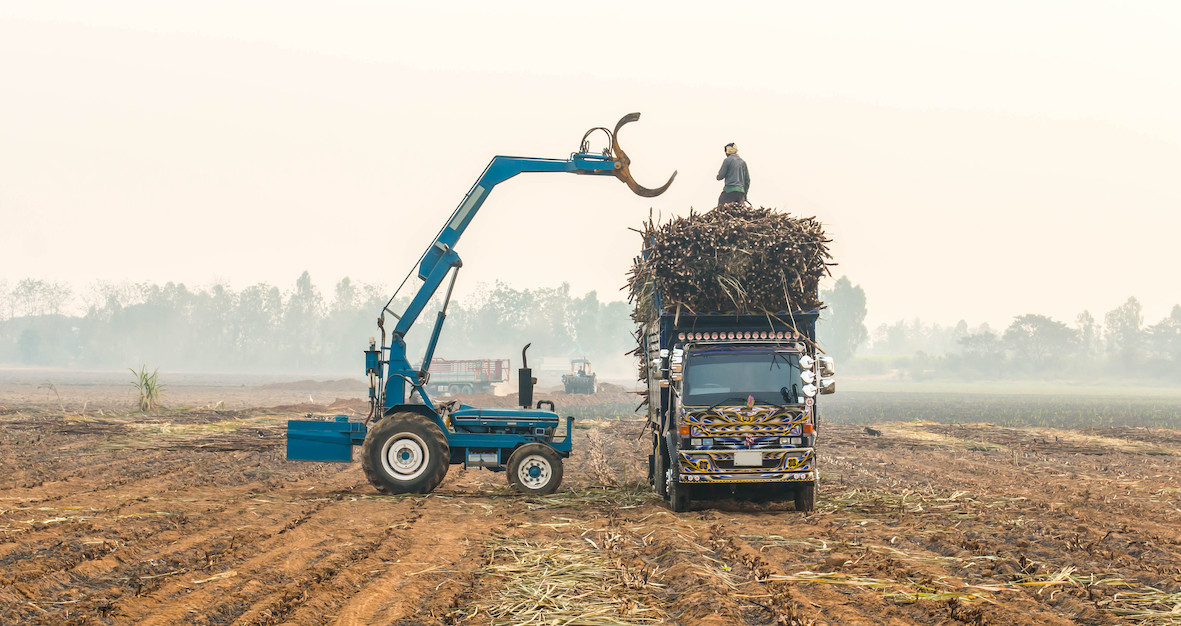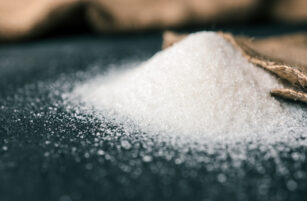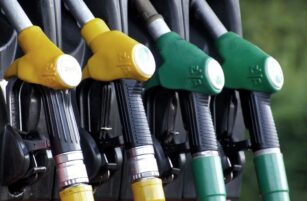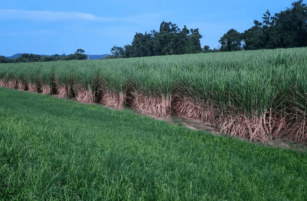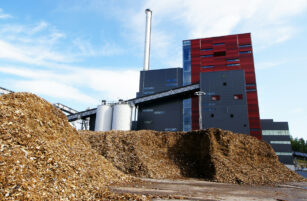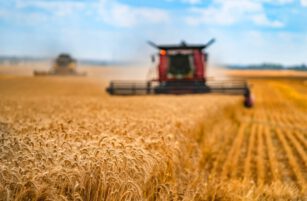- So far, our exploration of Sustainable (Intensive) Agriculture has focused on arable crops.
- We’re now going to consider crops that are grown in different ways such as in plantations, orchards, and in horticulture.
- The most important of these is sugarcane, the largest crop by production quantity and a major part of Czarnikow’s business.
Sugar: The Beginning of an SIA Success Story
Sugarcane is a dual purpose crop, supplying both human consumption and biofuel. When used for biofuel, it has an immediate and positive impact on greenhouse gas (GHG) emissions as it produces 75% less than gasoline (up to 90%).
Sugarcane is one of the most efficient photosynthesizers in the plant world and is classed as C4, which means it can convert up to 1% of solar energy into biomass. Around 80% of global sugar production comes from cane, with the remainder from beet.

According to FAOSTAT, global acreage has remained reasonably static in recent years. Between 2011 and 2019, acreage has fluctuated from 25.5 to 26.6m hectares. Prices, however, fluctuate significantly year-on-year because of the size of the exportable surplus of a few main producer countries (and demand fluctuations) and weather.
What’s changed during this period is the way the crop has been grown, and especially the activities around harvest time, and that will continue to provide positive impacts on GHG emissions.
To date, practices have been adopted in Brazil (39% of global production) and India (20%) have had an outsized effect on future developments. In Brazil, though, the ability to make environmental improvements may be reaching capacity meaning more attention must be placed on India, Thailand and China.
Multiple Drivers For Positive Change
Although there’s work to be done, several events have conspired and brought about positive GHG changes.
- More Have Mechanized Harvesting
- Transportation and Mill Technology Has Improved
- Agronomic Practices Have Improved
- Water Use and Pollution Have Reduced
- New Legislation and Incentives Have Arrived
- Bagasse Has Gained Popularity
- There’s Been Greater Potential for Livestock Usage (inc. Vinasse)
Changing Harvesting Techniques
This is the big one for SIA as the issues revolve around cane burning.

At present, there are four harvesting methods:
1. No Burning
Otherwise known as “green-cane harvesting”. From an SIA standpoint, this is easily the best method. With green-cane harvesting, the crop is not exposed to fire. Although green sugarcane can be harvested manually, for fodder or because of burning restrictions, the method is implicitly tied up with mechanization.
2. Pre-Harvest Burning
This can be described as ‘the traditional method’ where the crop is set on fire to help with harvest management and is then manually harvested (usually).
3. Post-Harvest Burning
The crop is harvested green before the field residues are burnt, either for ratoon protection or to prepare the land from planting a new crop.
Ratoons are a new shoot or sprout springing from the base of a crop, especially in sugarcane. The normal method of establishing a new crop, rather than a ratoon, is by taking stem cuttings, which can be hand-planted or by mechanized planting of billets (stalks).
Unfortunately, from an SIA point of view, long ratoons aren’t particularly helpful (they can span from two to over ten seasons). They might be more environmentally friendly and produce carbon sinks, but yields decline significantly after the third or fourth year, which missing the ‘Intensive’ part of SIA.
The below chart shows an example of a study from Brazil basis CO2eq per hectare. The crop was manually harvested, which explains the small contribution by machinery and diesel oil and it was not in the author’s scope to look at this portion if mechanized harvesting took place. Clearly, however, the problem at 48% is burning. Improvements in fertilizer use would also be a significant target.

Frequently in green harvesting, the leftover cuttings are used as a mulch, which has the advantage of retaining moisture, preventing soil erosion, improving the soil’s organic content, and crowding out weeds. An alternative is to gather the trash as a fuel source. The case is still out on species ecological impact of burning as it eliminates natural predators, such as ants and spiders, which can lead to higher populations of stem borer and shoot borer in the next ratoon, but may give better protection of fungi by this sanitising process.
Conclusion
For a moment, forget the positive SIA implications of green-harvesting. Does the method stand up in its own right? The answer is yes, so long as the whole part of this efficient biomass crop is considered and not just yield and sugar content for a single harvest.
When we add in the strong environmental arguments, the case becomes compelling.
We also have to consider the sugarcane milling process and the industrial demands and improvements that can be made there.
Increased green harvesting is happening anyway. Perhaps the most important evidence is real fields using these techniques, albeit for diverse reasons.
For a better understanding, we need to look no further than Centre-South Brazil, where 99% of the crop is mechanically harvested (up from 57% in 2009). In Thailand, that figure drops to just 30%. Perhaps this is because green sugarcane yields are usually lower than for burnt cane yields? There’s a lot to consider here, and we’ll continue to explore this in the next article.

Other Opinions You May Be Interested In…
- Sustainable Agriculture: Innovative Pest Control
- Sustainable Agriculture: Pest Control
- Sustainable Agriculture (UK): Not So Sweet Soils

